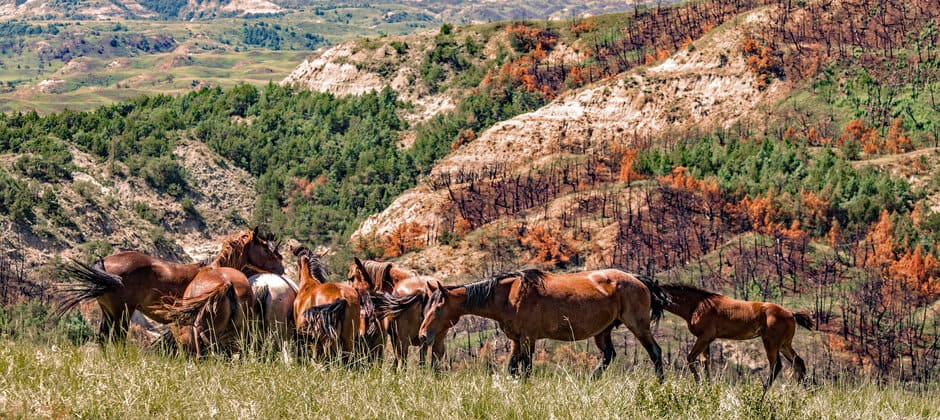Share this article
Horse and burro population decline continues
The number of wild horses and burros on public lands has decreased for the second year in a row, according to a recent report from the Bureau of Land Management.
The report estimates that 82,384 wild horses and burros currently roam across 27 million acres of Bureau of Land Management land in the western United States. This marks a 4.4% decline from the 2021 count of 86,189 animals. Though the rate of population decline slightly slowed from 2021 to 2022, the BLM plans to increase removal efforts. Those efforts will help the BLM work toward an agency-determined, ecologically sustainable level of 26,785 animals.
The Biden Administration is currently operating under a commitment to increase wild horse and burro roundups in response to the ecologically feral animals damaging habitat and outcompeting native species. The agency plans to gather a minimum of 22,000 wild horses and burros throughout 2022. Of these gathered animals, they hope to permanently remove and adopt out 19,000 animals, and treat 2,300 with various methods of fertility control before returning them to the public lands.
The BLM currently has approximately 60,000 horses and burros in holding facilities awaiting adoption, costing the agency $50 million per year. The agency adopted out 7,369 animals last year, the most since 2012. Adoptions help reduce the number of animals in holding facilities as the agency is currently prevented from using lethal management options due to congressional action. If the BLM plans to reduce the population through increased removals, it would require the agency to temporarily hold more animals in facilities, increasing their costs.
The BLM also announced enhancements to its Adoption Incentive Program, which offers financial incentives for adopting untrained, captured wild horses and burros. Through increased regulations for adopted animals, the BLM hopes to ease the growing public concern over adopted horses being sent to slaughterhouses rather than receiving long-term care. Enhanced protections for adopted horses and burros in the Adoption Incentive Program include compliance inspections of animals within six months of adoption, required veterinarian signatures on title applications, and an $100 increase in the minimum adoption fee. As roundups continue, the BLM will host roundtable discussions with various stakeholders to consider nonfinancial incentives that could further encourage adoptions and ensure adopted animals are cared for according to regulations.
The Wildlife Society has regularly advocated for federal agencies to reduce free-roaming horse and burro populations on public lands. As non-native feral and invasive species, horses and burros compete with native wildlife and can cause damage to resources and habitat.
For more information on this topic, check out TWS’ issue statement on Feral Horses and Burros in North America and watch the Horse Rich and Dirt Poor documentary film.
Header Image: A herd of wild horses in the western United States. Credit: Rennett Stowe








